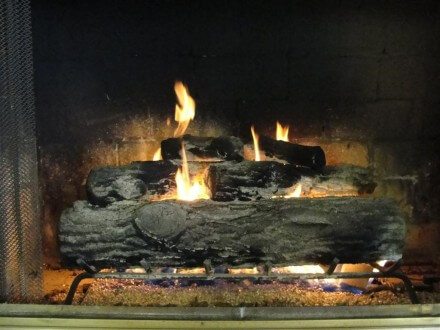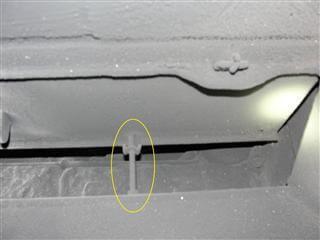 I'm not a fan of gas log fireplaces because they waste energy and they're a potential safety hazard. These fireplaces start out as wood burning fireplaces, but at some point someone decides that building a wood fire is too much work and artificial firelogs are ugly, so they have a gas log installed.
I'm not a fan of gas log fireplaces because they waste energy and they're a potential safety hazard. These fireplaces start out as wood burning fireplaces, but at some point someone decides that building a wood fire is too much work and artificial firelogs are ugly, so they have a gas log installed.
Most gas logs are pretty simple; they basically consist of a pipe with a bunch of holes. Gas comes out of the holes, the gas burns, and the exhaust gases go up the chimney, just like when you build a fire. Sounds good so far, but hold on.
What happens if the damper is closed? If the fireplace damper is closed when a gas log fireplace is operated, the combustion gases will come right in to the house. While you have the same potential for this to happen with a wood burning fireplace, it will be quite obvious if a wood burning fire exhausts in to the house; everything is going to get very smoky, very quickly.
When the combustion gases from a gas log fireplace come back in to the house, it's not nearly as obvious; in fact, it could be very easy to miss. These gases can contain high levels of carbon monoxide, making this a safety hazard.
Damper clips are supposed to fix this issue. To make sure the damper never gets completely closed on a gas log fireplace, there is supposed to be a damper clip installed. This damper clip will prevent the damper from closing all the way, and is supposed to prevent the exhaust gases from coming back in to the house.
I've tested several damper clips to see just how effective they are, and many of them don't do their job. These damper clips will often allow to damper to close most of the way. When the damper is mostly closed, most of the exhaust gases will still come back in to the home. To work properly, a damper clip needs to keep the damper open all the way, or at least most of the way.
When the damper is always open, which is how these fireplaces are supposed to be installed, there will always be warm air leaving the house through the chimney, cold air coming in to the house through the chimney, or both. This is a major source of energy loss.
 My recommendation: Invest in a newer direct vent gas insert. These have a two-pipe system, which allows them to bring in air directly from the exterior for combustion, instead of using the air in the home. While they're usually not intended as a heat source, they kick out a lot of heat, especially if there is a blower fan installed. My wife loves our gas fireplace, and I don't have any specific problems with it.
My recommendation: Invest in a newer direct vent gas insert. These have a two-pipe system, which allows them to bring in air directly from the exterior for combustion, instead of using the air in the home. While they're usually not intended as a heat source, they kick out a lot of heat, especially if there is a blower fan installed. My wife loves our gas fireplace, and I don't have any specific problems with it.
Reuben Saltzman, Structure Tech Home Inspections - Email- Home Inspector Minneapolis




